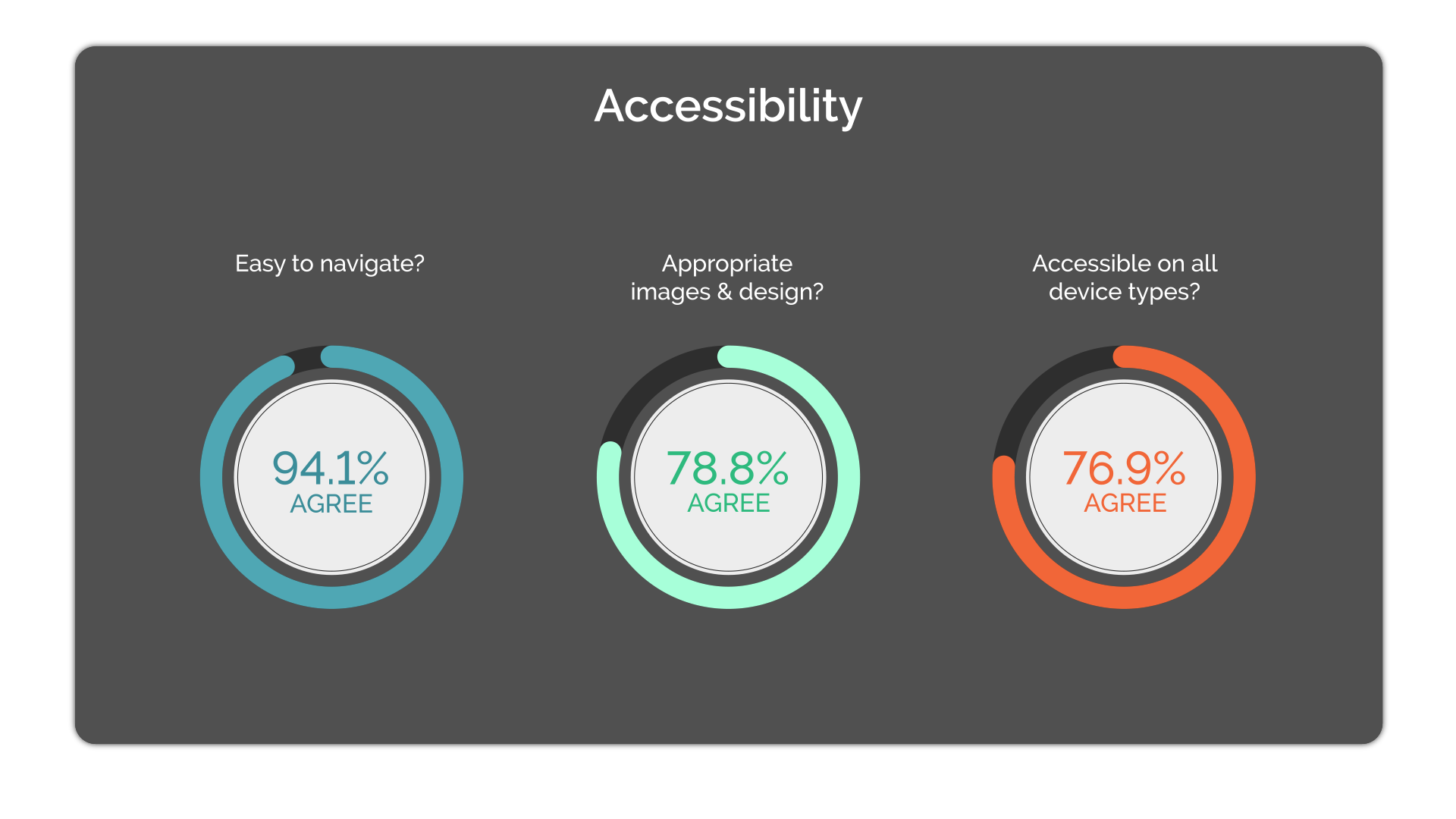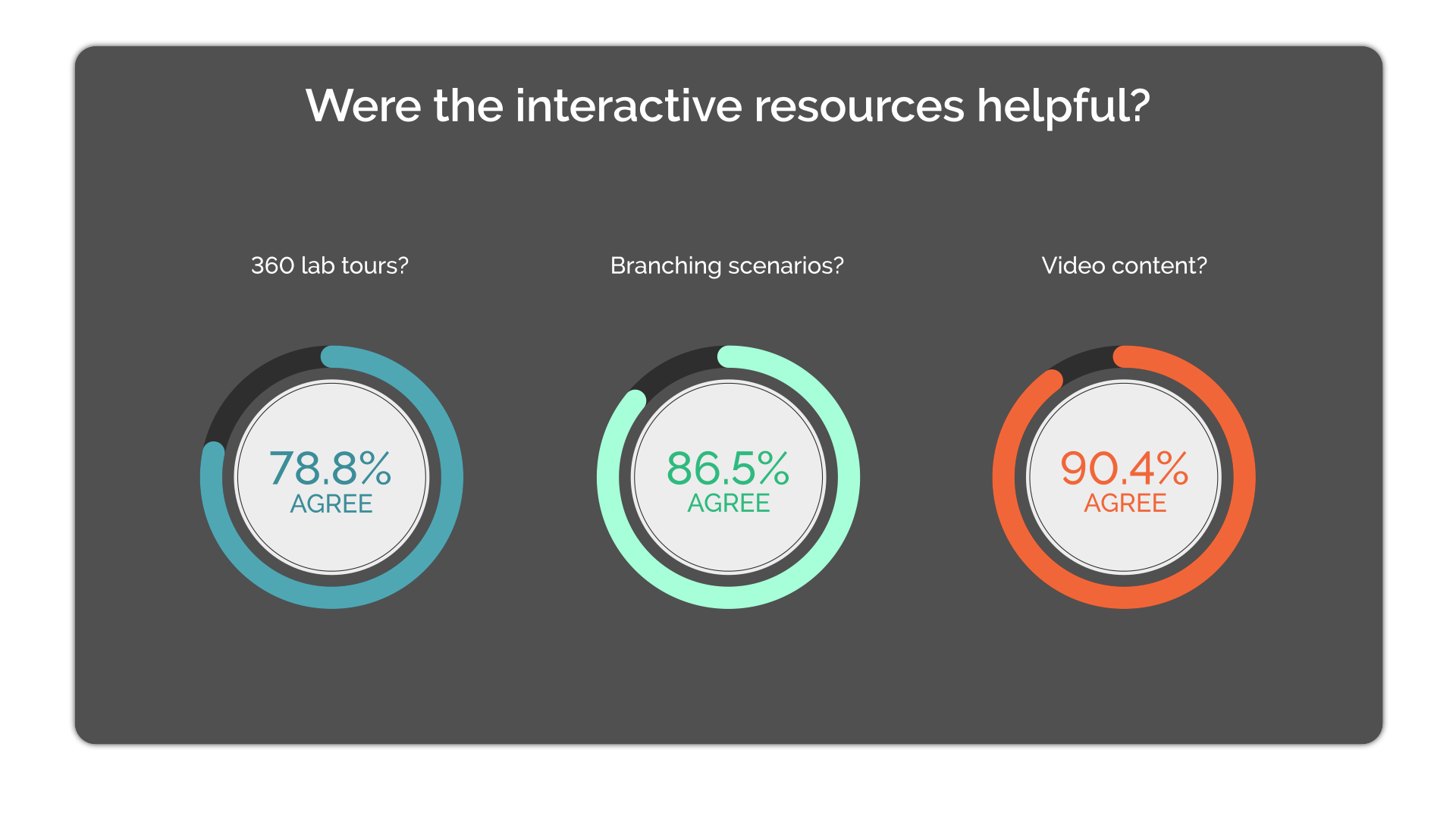In September 2020, the School of Biomedical, Nutritional and Sport Sciences launched their new Laboratory Health and Safety Module. This online package was designed to give Stage 1 students an induction into key areas of laboratory health and safety, but also as a revision resource for Stages 2 and 3. Future content development will look at additional resources specific to the later stages of study.
Development of this module required a complete redesign of laboratory health and safety resources, moving from paper-based module handbooks to interactive, online blended materials. We had to establish an infrastructure to support both staff and students with this change. We also used key design principles and frameworks to facilitate user engagement with interactive resources.
A collaborative team was formed between the Faculty of Medical Sciences Technology Enhanced Learning team (FMS-TEL) and the school of Biomedical, Nutrition and Sport Sciences (BNS) to amalgamate technological, pedagogical and content knowledge.
Our Goals
Student engagement: Academic staff were finding it difficult to monitor student engagement with the paper-based module handbook and laboratory code of conduct and wanted to have a more standardised approach to ensure that all students are aware of and complying with health and safety requirements in the laboratory.
Blended Learning: We did not want to simply replicate the paper materials into a digital format, so a lot of time was spent thinking about blended learning pedagogy.
New and interactive Resources: Access to the new VLE, Canvas, provided us with a more sophisticated platform to produce an interactive module with new approaches to learning.
Staff Autonomy: We did not want to rely on external tools and specialist software otherwise upkeep and editing would be a challenge once staff handover was completed.
The Project Roadmap below summarises key milestones from the project:
Achievements
Clear Signposting and Navigation
The intention is that students can dip in and out of sections in whichever order they prefer. However, the laboratory safety section was divided into three ordered segments:
- Arriving at the lab
- During the lab practical
- At the end of the lab practical
Multi-disciplinary
Some resources cover all three strands of Biomedicine, Sport and Nutrition so we decided to host one course for all. Subject specific materials are clearly labelled. We attempted to introduce lock and release and mastery pathways so that students would only access their own subject areas, however some students are multi-disciplinary so this did not work. Also, there was too much of a time delay with the Canvas mastery pathways function that we felt this was not appealing to students.
Humanising/Personalisation
We felt it important that students could connect with key staff members and that video welcomes would achieve this.
- Videos from a laboratory demonstrator
- Welcome video from Head of School and H+S Officer
Interactive Resources
It was always planned that we would use 360⁰ images to allow students the opportunity to become familiar with the laboratory environment before attending in person. This is to help alleviate some of the anxiety that our students experience when first entering a large laboratory space.
- 360⁰ lab walkthrough tours
- 360⁰ interactive images
Innovative assessments
Canvas enabled us the opportunity to embed and host new online interactive assessments.
(i) 360⁰ hotspots hazard identification
We wanted to create a hazard identification exercise in a safe environment. 360⁰ images allowed us to create an interactive digital version of the laboratory with a number of hazards included. This would not have been safe or possible to do in a physical laboratory space.
The 360⁰ materials were hosted externally on theasys.io There are many tools which allow you to add hotspots to 360⁰ images but the problem is that they are never hidden. However, with the ability to upload custom hotspots in theasys we were able to create and upload a transparent image to use as an invisible hotspot.
(ii) Branching Scenarios
Branching scenarios allow students to make decisions in a safe online environment, helping them to understand the consequences of their choices.
Self-management of learning
We added features to encourage students to monitor their own progress:
- Standalone units to encourage self managed learning and flexibility
- Colour-coded and branded sections for ease of navigation
- Clear learning objectives for each section
- Section progress bars
- Content release based on complete action e.g. minimum score in Health and Safety quiz
For future developments, we are considering how we may be able to generate course completion certificates or Digital Badges.
Student Feedback and Canvas Analytics
The new course went live in September 2020 for the start of the academic year with 1176 students enrolled. Canvas analytics indicates good interaction at appropriate times.
- 21st Sept 28,230 page views
- 12th October 40, 676
- January access showed a peak of 26, 997






